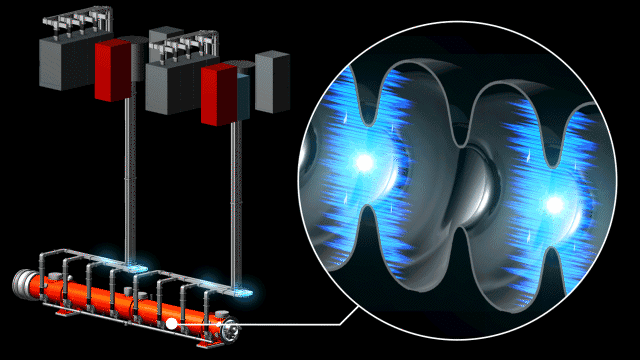After large-scale overhaul, the world's most powerful X-ray laser will soon be put into use As a powerful upgrade of Stanford Linear Accelerator coherent light source (LCLs), lcls-ii uses lower temperature than deep space to accelerate electrons to close to the speed of light and emit one million X-rays per second

Lcls-ii is called hard X-ray free electron laser (xfel), which is an instrument designed to capture micro object images with high resolution and ultrafast time scale. Its predecessor was used to image viruses, reproduce the conditions in the center of stars, boil water into a plasma state hotter than the earth's core, create as much sound as possible, and create a "Diamond rain" that may fall on planets such as Neptune.
The newly completed second stage instrument will have more capabilities. The X-ray pulse of lcls-ii will be 10000 times brighter than its predecessors on average, and will emit 1 million X-ray pulses per second - a significant increase from the initial 120 pulses per second.
Mike Dunne, director of lcls-ii, said: "In just a few hours, lcls-ii will produce more X-ray pulses than the current laser produces throughout its lifetime. Data that may have taken months to collect in the past can now be generated in a few minutes. It will take X-ray science to a new level, pave the way for a whole new series of research, and improve our ability to develop revolutionary technologies to deal with some of the latest challenges facing our society Profound challenges. "
The working principle of lcls-ii is the same as that of the first generation - electrons are generated before they enter the "undulator", and then accelerated along a long pipe to swing the electrons until they throw X-rays from side to side.
But now, every step of the process has been upgraded. The biggest innovation is the accelerator in the middle. Previously, electrons were emitted through copper tubes at room temperature, while lcls-ii uses a set of 37 low-temperature modules, which can cool the equipment to - 271 ° C - slightly higher than absolute zero. It does this by piping liquid helium coolant from two large helium freezers to modules.

At such a low temperature, the niobium cavity in the module becomes superconducting, so that electrons can pass through with zero resistance. Microwaves provide energy for oscillating electric fields, which resonate in these cavities and synchronize with the rhythm of passing electrons to transfer energy to them. This extra energy accelerates the electrons, so when they pass through all 37 low-temperature modes, their speed is close to the speed of light.
Next, the electrons enter the undulator, which uses a strong magnet to pull the electrons left and right, causing them to swing and cause them to emit X-rays. The new undulator can produce "hard" and "soft" X-rays, which are useful for different targets - hard X-rays can image individual atoms in detail, while soft X-rays can show the energy flow between atoms and molecules.
The team said that with the low temperature modulus reaching low temperature in April, the instrument is now ready for the first electronic test. Lcls-ii is expected to start producing X-rays later this year. Once successful, the facility is expected to provide new insights into chemistry, biology, computing and quantum mechanics.